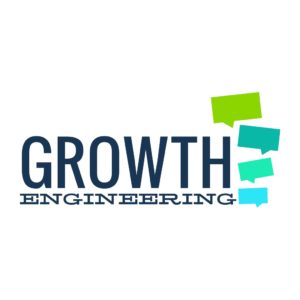How Your LMS Can Boost Social Learning
Social learning is one of the most exciting things to happen to learning technologies in the last decade or so. When you consider the benefits of social learning, it isn’t hard to understand why it’s been so successful. Letting people discuss the learning objective gives them a chance to share their perspectives. It even lets them translate more complicated points into language that their peers might better understand.
The advantages don’t stop at mere learning efficiency. A social learning initiative might just become the catalyst for organizational transformation. Poor communication can cripple any company and make it almost impossible to convey the vision and values. Social functionality adds that link between the employer and the employees.
Once that dialogue is open, you’re well on your way to a more engaged workforce, but how do you get to that point? Here are just a few ways that your LMS can give you the social learning program of your dreams!
1. Social News Feed
A public news feed might be the quintessential feature of any social platform. It gives every user on the system an overview of all activity and lets them add their own comments or offer a friendly ‘like’. In a learning platform, this feature has a near-endless range of applications. Users can share articles related to their industry, admins can use it to ask questions or post surveys, and it can even be used to spark off the odd competition!
2. Discussion Groups
What if there’s a secret contingent of innovative tech enthusiasts in your team? Between them, their ideas could change your organization, or even your entire industry, for the better. If they don’t have somewhere to discuss their interests, that transformation will remain a distant dream. Topic-specific discussion groups are knowledge-hubs where tech-nerds, process-junkies or design-nuts can congregate and talk about the things that matter to them. Once these groups are created around your business needs, you can crowd-source the collected genius in your workforce and use their input to create even better training materials in the future.
3. ‘Ask An Expert’ Area
A ‘frequently asked questions’ section is a great idea on paper. In reality though, this section of an LMS is easily neglected or forgotten about completely. Left long enough, the questions may become irrelevant or, worse still, the answers might be just plain wrong. You can use your social functionality to add all your Subject Matter Experts to one group, creating a go-to area for any queries. As they answer questions, these can be stored in the experts area to help any future learners with similar problems.
4. Live Chat
Sometimes your learners might have questions that they don’t want to ask on a public forum, or they have a question that only a specific person can answer. Who knows, they might even be arranging a surprise birthday cake! In any case, a live chat functionality lets them search for users, see if those users are online, and open private conversations. They can even add other users and create a group conversation. This brings the users closer together and reduces the risk of any communication issues.
5. Content Rating And Comments
As a learning manager, it can sometimes feel like your learners are on the other side of a huge wall. You create eLearning and other assets, but you have no idea how they’re received. Adding a comments section to each piece of learning content lets the learners say thank you, or point out areas for improvement. The learners can also flag up any content that needs to be updated, helping you ensure that nothing slips through the net.
6. User Generated Content
What could be more social than letting your learners share their own learning assets with each other? Enabling user-generated content might have seemed like a fantasy a few years ago, but now it’s easier than ever. Using their mobile devices, learners can record videos demonstrating how they’re using the training. This in itself can generate a huge bank of learning assets that you wouldn’t have without social functionality.
7. Enhanced User Profiles
User profile areas are a standard feature of almost any web-based application. It’s easy to take them for granted and miss out on their potential. Sure, you can let learners add their email and their job title, but why stop there? Public learner profiles let your learners add their skills, share their passions and shout about their proudest moments at work. With this in place, other learners can find kindred spirits and identify the perfect partner for their next big plan!
8. Gamification
Social functionality is pretty good on its own, but sometimes your learners need that extra incentive. After all, if nobody feels inclined to log on to your LMS, it’ll become a very lonely place! Gamification goes hand-in-hand with social learning. Users can earn achievements for logging on, interacting with their peers or sharing their own insights. Leaderboards show who has earned the most points and badges and this can ignite a little friendly competition, giving the learners another reason to keep logging in.
9. Praise Badges
Everybody likes to get feedback, even if it’s not always positive. Without a line of communication between managers and learners, it can be difficult to offer praise or constructive criticism. Once you have a mix of social and gamification features on your LMS, you can unlock the potential of praise badges. This lets managers award a special prize to any learner in their team and, more importantly, tell the world what that learner did to deserve it!
10. Integration With Social Networks
It’s a safe bet that your learners are already active on social media. Wouldn’t it be great if they could share their professional successes with their personal network? With the right social media integrations, your learners can show off their badges and achievements with their Twitter followers, their LinkedIn network, and even the cousins they’ve never met on Facebook!
11. Mobile Optimization
It’s not just a coincidence that the rise of social media and that of mobile technology happened at the same time. Being a social citizen means interacting in an instant and responding to every hot trend that appears on your feed. If you want to reap the benefits of social learning, your LMS needs to be mobile responsive. No matter where your learners are, they should be able to access any of the big conversations and give their own perspective.
Final Word
If you’re not using the social functionality on your LMS to its fullest potential, hopefully this list will give you a few ideas. Even if your LMS isn’t filled with social features, you should have a good idea of what to look for when it comes time to upgrade. In any case, social learning is a powerful tool and one that no modern training initiative should be without!










